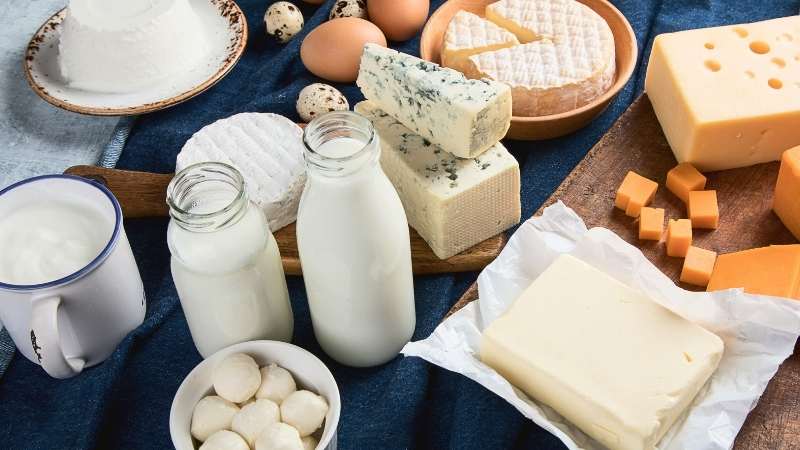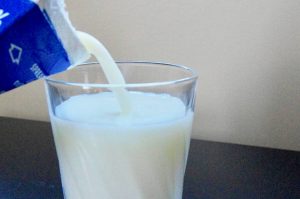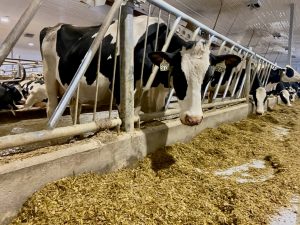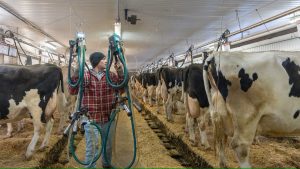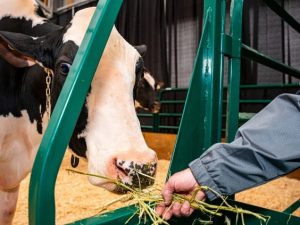
Perishable goods flew off the shelves, resulting in limits being placed on items like dairy and poultry. The standard distribution system schedule put in place for dairy products could not keep up with buyers’ increased shopping.
While retail demand from grocers skyrocketed, orders from the foodservice industry plummeted. This has resulted in unforeseen fluctuations in the dairy market.
Hotels, restaurants, schools and eateries are closed or operating at limited capacity. As a result, there is now an enormous surplus of milk that has nowhere to go. Farmers are not equipped with storage spaces to accommodate the excess supply. Unlike agriculture products like potatoes, milk has to be sold immediately or risk spoilage.
Cows will continue producing milk, regardless of fluctuations in the market. While farmers have the option to reduce the size of their herd or change diet or nutrition, these things could prove detrimental when the market stabilizes.
The Supply Management System
A supply management system controls production quotas and imports for Canadian dairy, chicken, turkey and eggs. It was established in the1970s to coordinate production and demand while simultaneously controlling imports. By operating under this method, prices are stabilized for both producers and consumers.
A national agency represents each industry, and they are in charge of setting production levels that match provincial demand. Farmers in each province are allocated production quotas that are meant to prevent surpluses or shortages.
The original quotas were based on consumer needs pre-pandemic. As a result of these unforeseen events, farmers must now adjust to the new Canadian dairy demand. Here are four main ways farmers can adapt to the changing times.
Dump the Milk
Producers say that discarding raw milk is inevitable at this stage. Farmers are reporting that they have been asked to take turns dumping milk. Although they’re paid for it, the waste could amount to as much as 5 million litres every week.
This disposal method is unsustainable and should only be utilized while the market is above capacity. Cows must continue to be milked to keep them comfortable and healthy, and production must continue to ensure product availability in retail stores.
Donate to Food Banks
Rather than dumping milk, some farmers have begun donating to food banks to support Canadians in need. While this is a positive form of dispersing the milk surplus, it has the potential to overwhelm food banks that may not have the storage capacity to support this influx.
Additionally, the raw milk provided from farmers must be processed, which complicates the standard donation process.
Improve Operations
Dairy farmers should focus on improving operations to become more efficient and cost-effective. Many producers have begun investing in updated equipment and robotics to save time and money. Competition is set to increase as a result of import growth projected for the next decade. To maintain a market edge, operations should be improved and simplified wherever possible.
Expand or Retire
In 2019, the Canadian federal government announced an aid package valued at $1.75 billion to compensate supply-managed dairy producers over an eight-year period. The Dairy Direct Payment Program is one part of this aid package and provides $345 million payments as compensation during 2019 and 2020.
The aid package was proposed as a result of import shifts. The Canadian government has opened part of its domestic market to foreign producers as part of several free-trade negotiations. To adapt to increased competition from foreign products, Canadian producers should plan to expand their operations or retire. Larger farms will be able to sustain demand while simultaneously upgrading their methods to be constantly improving.
Smaller producers may not be able to afford the necessary production updates to keep up with competitors.
Future Demand
These are unprecedented circumstances. As schools, businesses and restaurants reopen, dairy demand will increase. With indoor capacity requirements and shifts in consumer trends, consumption levels will undoubtedly continue to fluctuate.
While farmers should take steps to dispose of surplus responsibly, they should not halt production or decrease their operation size.
